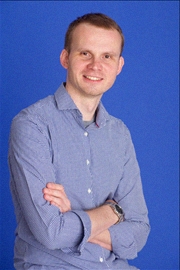Tutor HuntResources Physics Resources
Matter And Radiation Questions 1 & 2
Matter and Radiation Questions 1 & 2
Date : 21/04/2015
Author Information

Uploaded by : Martin
Uploaded on : 21/04/2015
Subject : Physics
a) Complete the table below: Particle: symbol, particle or antiparticle, charge / proton charge antiproton: , antiparticle of proton, -1 neutrino: v, particle (beta particle), 0 neutron: n, particle, 0 positron: B+, antiparticle of electron, +1
b) The tracks of a positron and an electron created by pair production in a magnetic field curve in opposite directions as shown above. i) Why do they curve in opposite direction? A: They curve in opposite direction because they each possess opposite electrostatic charge. An electron is possesses a negative charge and a positron possesses a positive charge. ii) Both particles spiral inwards. What can you deduce from this observation about their kinetic energy? A: The slower the particles travel, the more they bend. It means they possess relatively low kinetic energy. iii) Explain how Carl Anderson deduced from the photograph that the track was created by a positron rather than an electron travelling in the opposite direction. A: By bending in the opposite direction from electron particles, it must have been positively charged.
Question 2 a) (_90^229) Th is a neutral atom of thorium. How many protons, neutrons and electrons does it contain? A: It contains 90 protons and 229-90=139 neutrons in the nucleus. Because it is a neutral atom it has no charge therefore it contains an equal amount of electrons, i.e. 90 electrons. b) (_X^Y) Th is a neutral atom of a different isotope of thorium which contains Z electrons. Give possible values for X, Y and Z. A: The atom must contain 90 protons for it to be an atom of the same element. It must contain 90 electrons for it to be a neutral atom. One relatively stable isotope of thorium is (_ ^232) Th. therefore the possible values of are X=90, Y=143, and Z=90.
This resource was uploaded by: Martin
